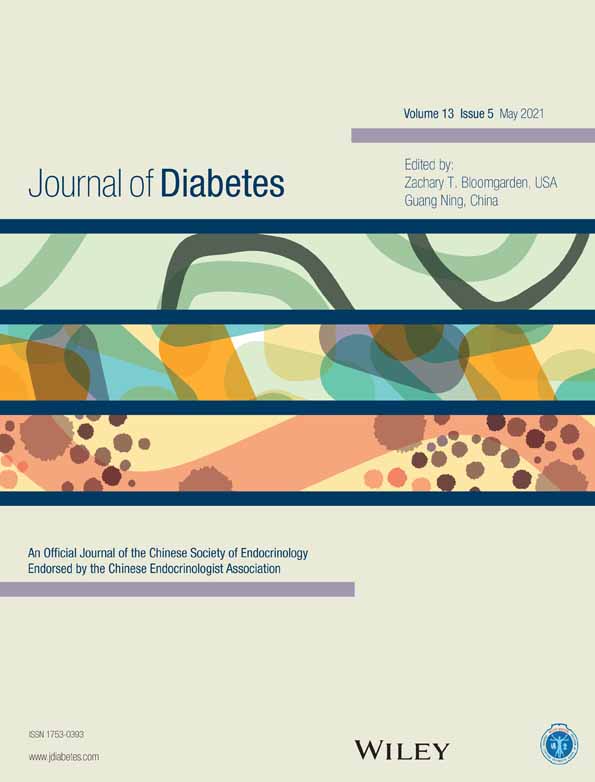Association between maternal prepregnancy body mass index and risk of preterm birth in more than 1 million Asian American mothers
在一百万亚裔美国母婴中探讨母亲孕前体重指数与早产的关系
Funding information: US National Institutes of Health, Grant/Award Number: R21 HD091458
Abstract
enBackground
Asian Americans are among the fastest growing subpopulations in the United States. However, evidence about maternal prepregnancy body mass index (BMI) and preterm birth among Asian Americans is lacking.
Methods
This population-based study used nationwide birth certificate data from the US National Vital Statistics System 2014 to 2018. All Asian American mothers who had a singleton live birth were included. According to Asian-specific cutoffs, maternal prepregnancy BMI was classified into underweight (BMI < 18.5 kg/m2), normal weight (BMI 18.5-22.9 kg/m2), overweight (BMI 23.0-27.4 kg/m2), class I obesity (BMI 27.5-32.4 kg/m2), class II obesity (BMI 32.5-37.4 kg/m2), and class III obesity (BMI ≥37.5 kg/m2). Preterm birth was defined as gestational age less than 37 weeks. Multivariable logistic regression models were used to estimate the odds ratio (OR) of preterm birth.
Results
We included 1 081 341 Asian American mother-infant pairs. The rate of preterm birth was 6.51% (n = 70 434). The rate of maternal prepregnancy overweight and obesity was 46.80% (n = 506 042). Compared with mothers with normal weight, the adjusted OR of preterm delivery was 1.04 (95% CI, 1.01-1.07) for underweight mothers, 1.18 (95% CI, 1.16-1.20) for overweight mothers, 1.41 (95% CI, 1.37-1.44) for mothers with class I obesity, 1.69 (95% CI, 1.63-1.76) for mothers with class II obesity, and 1.78 (95% CI, 1.66-1.90) for mothers with class III obesity. Similar patterns of associations were observed in Asian American mothers across different country origins.
Conclusions
Among Asian American mothers, maternal prepregnancy overweight or obesity, defined by Asian-specific, lower BMI cutoffs, was significantly associated with an increased risk of preterm birth. The risk of preterm birth increased with increasing obesity severity. These findings highlight the importance of using Asian-specific BMI cutoffs in assessing risk of preterm birth among Asian American mothers.
摘要
zh背景
亚裔美国人是美国人口数量增长最快的群体之一,但关于该人群女性怀孕前体重指数(BMI)和早产的关系研究匮乏。
方法
我们基于美国国家生命统计系统中全国出生证明数据展开此项研究。研究纳入了2014年至2018年系统记录的所有单胎活产的亚裔美国母婴。根据孕前体重,以亚裔美国女性特定的BMI分界方法为标准,分为六组:体重过轻组(BMI<18.5kg/m2)、正常体重组(BMI18.5-22.9kg/m2)、超重组(BMI23.0-27.4kg/m2)、I级肥胖组(BMI27.5-32.4kg/m2)、II级肥胖组(BMI32.5-37.4kg/m2)和III级肥胖组(BMI≥37.5kg/m2)。早产的定义为胎龄小于37周。采用多变量logistic回归模型控制混杂因素,评估女性孕前体重对早产的影响。
结果
研究最终纳入了1,081,341对亚裔美国母婴,整体早产发生率为6.51%(n=70434),产妇孕前超重和肥胖发生率为46.80%(n=506042)。与正常体重与母亲相比,体重过轻组的女性早产OR值为1.04(95%CI 1.01-1.07),超重组为1.18 (95%CI 1.16-1.20),I级肥胖组为1.41(95%CI 1.37-1.44),II级肥胖组为1.69(95%CI 1.63-1.76),III级肥胖组则达到1.78(95% CI 1.66-1.90)。我们根据国家和地区对这些亚裔美国女性进行分类,发现孕前BMI,尤其是超重和肥胖对早产的影响均稳定存在。
结论
亚裔美国女性怀孕前超重或肥胖会增加早产的风险。肥胖程度越严重,早产的风险就越高。使用亚裔美国女性特有的BMI分界方法代替常规美国女性的BMI分界方法,可以减少错误分类,具有更好的临床指导意义。
CONFLICT OF INTEREST
The authors report no conflict of interest.




